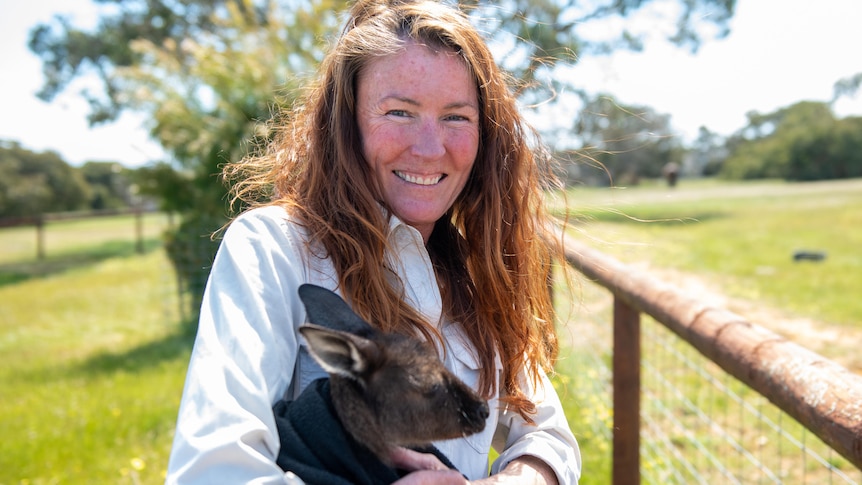Is adventure tourism, with a science bent, the new way to attract travellers?
From tracking echidna poo, trapping mosquitoes, or counting face masks on beaches, citizen science is helping boost scientific records and data.
But it is not just for locals. A new style of tourism encourages people to involve themselves in landscapes and wildlife while visiting locations, rather than just taking in the sights.
In South Australia, Kangaroo Island is known for its unique and abundant wildlife.
But 25,000 koalas and 50,000 farm animals perished in the fatal Black Summer bushfires of 2019-2020.
Two people also lost their lives.
Roanna Horbelt has been rescuing native orphaned animals at her Wildlife Land Trust Sanctuary for the past decade. She said the fires tested her mettle of her.
“We were out in the fire grounds the whole time and you see horrible things, but we didn’t focus on that at all,” she said.
“I don’t have one picture. We focused on the positive things.
“We focused on the live animals, and we had about …150 to 200 kangaroos in the sanctuary at that stage, where it really was a sanctuary.”
Tourism that helps wildlife
Ms Horbelt and her partner, Phil Smith, saw an opportunity to give back to the animals not just through rehabilitation but through research and conservation.
They started an ocean tourism operation taking small group boat trips to the remote north-western coastline of Kangaroo Island to introduce people to the astounding diversity of animals, landscape, and geology.
The tourists, along with active citizen scientists, contribute to data monitoring and collection programs by taking photos, noting locations and animals, and making new discoveries.
Kangaroo Island Dolphin Watch coordinator Tony Bartram said, surprisingly, not much was known about dolphins.
“People think we know a lot, because dolphins are on T-shirts, in movies, on TV, all the rest, but they’re actually listed as data deficient,” he said.
“Getting baseline data about all species of dolphins is incredibly important.”
Mr Bartram said this area of Kangaroo Island was the perfect place to conduct these tours.
“It’s not like being in Queensland. In South Australia, the marine environment is largely unexplored,” he said.
Mr Bartram had high hopes for the project.
“It’s important to us because it gives us a greater data flow, but also it means that we’re getting to places we haven’t been able to get to before,” he said.
“The limits on the research we’ve done so far are the limits on us and how far we travel, not on the dolphins.”
It’s not just dolphins tourists get to see. They have also spotted whales and ospreys previously not thought to inhabit the area.
Seeing a whale’s tail, known as a fluke, is the money shot. The unique markings help to identify the whale.
The more cameras the better, according to Ms Horbelt.
“The data they collect is vital. It’s not easy to get a fluke of a whale or a fin because the animals move very quickly,” she said.
‘Bloody hard work’ pays off
Another citizen scientist, Sue Holman, has documented ocean life around the island for eight years and was amazed at the data coming back from the tours.
“There are only seven recorded [osprey] nests around the island and they didn’t believe there were any up that end of the north coast at all, no nests,” she said.
“This is new data. This is cutting-edge stuff that we really want to show… there are nests up there that no-one knows about.”
Ms Horbelt acknowledged the tours were doing groundbreaking work.
“All this data goes on to different citizen science [web-based] platforms,” she said.
“They got so excited when they saw my fluke shots because no fluke shots of humpback whales had ever been registered here in Kangaroo Island waters.”
Her partner, Mr Smith, was not surprised no-one else had started up a citizen tourist operation in the area.
“It’s too much bloody hard work,” he laughed.
“It’s not going to be an easy business to run but it’s going to be a fun business to run. We’re going to discover so much out there with that scientific background and we can’t wait.”
Ms Horbelt wasn’t shying away from that hard work either.
“The tourism part of things is financing the research, to be honest, but it’s also giving people a reason to get excited about seeing something new — and discovering new things is exciting for anyone,” she said.
To learn more about their work and other innovative stories, watch Movin’ to the Country on ABC TV, Fridays at 7:30pm or any time on ABC iview.
.
